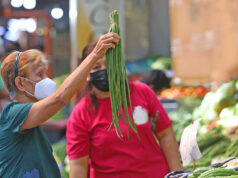Remittances recover in July to grow fastest in nine months — BSP data
By Luz Wendy T. Noble
MONEY SENT HOME by overseas Filipino workers (OFW) recovered in July from June’s drop to post the fastest growth in nine months, according to data the Bangko Sentral ng Pilipinas (BSP) released on Monday.
OFW cash remittances jumped 7.5% to $2.581 billion in July from $2.401 billion a year ago, and by 12.71% from June’s $2.290 billion, BSP data showed.
These inflows’ 7.5% growth pace in July was the fastest since October 2018’s 8.7% rise.
Personal remittances, which include inflows in kind, bore a similar picture, increasing by 7.2% year-on-year to $2.867 billion in July which was also the fastest since October 2018’s eight percent.
Sought for comment, UnionBank of the Philippines, Inc. Chief Economist Ruben Carlo O. Asuncion described the latest remittance performance as a “welcome result” due to its impact on gross domestic product (GDP).
“We were expecting a 4.9% growth year-on-year for July and $2.5 billion total inflow. This is positive for household spending for the beginning month of Q3 2019,” he said in an e-mail.
“As a largely domestically driven economy like the Philippines, this bodes well for how GDP for the third quarter of this year will turn out. More remittances inflow just means more domestic demand, and increasing domestic demand induces more economic expansion.”
GDP growth clocked in at a disappointing 5.5% last semester against the government’s 6-7% target for full-year 2019, due largely to late enactment of the P3.662-trillion national budget that left new projects unfunded.
Rizal Commercial Banking Corp. Chief Economist Michael L. Ricafort cited the stronger peso — at P50-51 to the dollar — for the bigger remittances as it required “more US dollars or foreign currencies to be sent to the Philippines by OFWs to their families/dependents.”
“Furthermore, improved/increased deployment of OFWs, especially diversification of OFW deployment to more host countries, especially in major/developed countries around the world (especially those countries that experience ageing population and requiring more labor from overseas) may have also partly supported the latest stronger growth in OFW remittances,” Mr. Ricafort added.
The seven months to July saw cash remittances growing 3.9% to $17.219 billion and personal remittances increasing by 3.6% to $19.119 billion.
The same comparative seven-month periods saw cash remittances from land-based and sea-based OFWs increase by 2.5% to $13.4 billion and by 8.9% to $3.8 billion, respectively.
US continued to top all sources of OFW remittances with a 36.8% share year-to-date, followed by Saudi Arabia, Singapore, United Arab Emirates, the United Kingdom, Japan, Canada, Hong Kong and Kuwait.
“The combined remittances from these countries [sic] accounted for 78.1% of total cash remittances from January to July 2019,” the central bank said.



